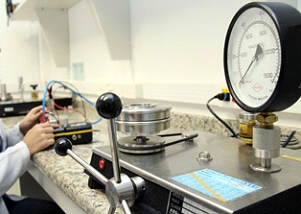Force:
Force is any interaction that, when unopposed, will change the motion of an object. A force can cause an object with mass to change its velocity (which includes to begin moving from a state of rest), i.e., to accelerate. Force can also be described intuitively as a push or a pull. A force has both magnitude and direction, making it a vector quantity. It is measured in the SI unit of Newton and represented by the symbol F.
Universal Testing Machine:
Uniaxial testing machine also known as Universal Testing Machine (UTM) , is used to test the tensile stress, compressive strength of materials. It is named after the fact that, it can perform any standard tensile and compressive tests on materials, components and structures.
Hardness:
Hardness is a measure of the resistance to localized plastic deformation induced by either mechanical indentation or abrasion. Some materials (e.g. metals) are harder than others (e.g. plastics, wood). Macroscopic hardness is generally characterized by strong intermolecular bonds, but the behavior of solid materials under force is complex; therefore, there are different measurements of hardness: scratch hardness, indentation hardness, and rebound hardness.
Indentation Hardness :
Brinell Hardness Testing Machine
The Brinell Scale characterizes the indentation hardness of materials through the scale of penetration of an indenter, loaded on a material test-piece.
Rockwell Hardness Testing Machine:
The Rockwell Scale is a hardness scale based on indentation hardness of a material. The Rockwell test determines the hardness by measuring the depth of penetration of an indenter under a large load compared to the penetration made by a preload. There are different scales, denoted by a single letter, that use different loads or indenters. The result is a dimensionless number noted as HRA, where A is the scale letter.
Vickers Hardness Testing Machine:
Vickers is as an alternative to the Brinell method to measure the hardness of materials. The Vickers test is often easier to use than other hardness tests since the required calculations are independent of the size of the indenter, and the indenter can be used for all materials irrespective of hardness. The unit of hardness given by the test is known as the Vickers Pyramid Number (HV) or Diamond Pyramid Hardness (DPH).

